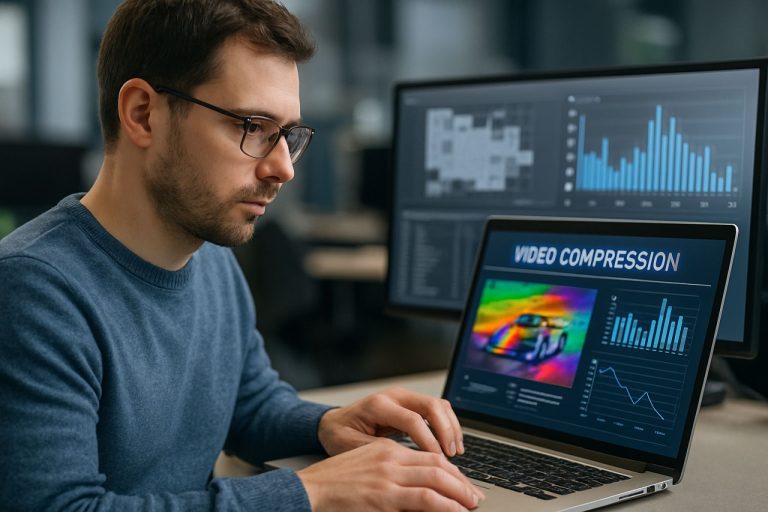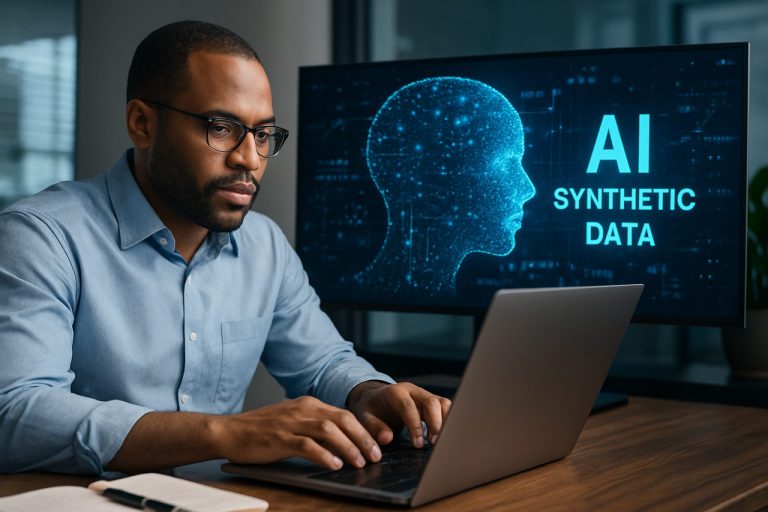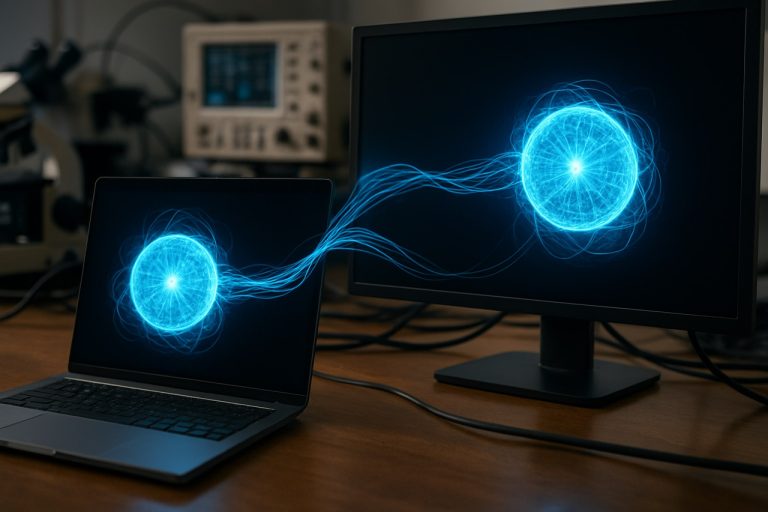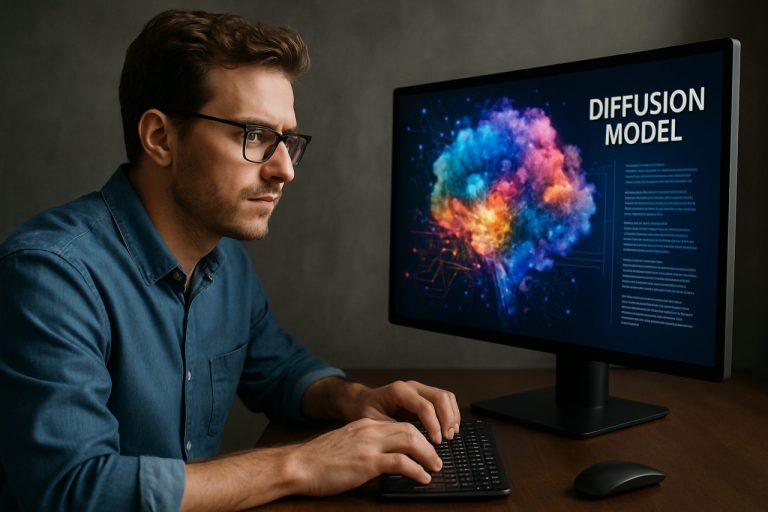
Diffusion Models in Artificial Intelligence: Transforming Generative Capabilities and Redefining Machine Creativity. Discover How These Models Are Shaping the Future of AI Innovation.
- Introduction to Diffusion Models: Origins and Core Concepts
- How Diffusion Models Work: Step-by-Step Breakdown
- Comparing Diffusion Models with GANs and VAEs
- Key Applications: From Image Synthesis to Text Generation
- Recent Breakthroughs and Notable Implementations
- Challenges and Limitations in Current Diffusion Models
- Future Directions: Research Trends and Industry Impact
- Ethical Considerations and Societal Implications
- Sources & References
Introduction to Diffusion Models: Origins and Core Concepts
Diffusion models have emerged as a transformative approach in artificial intelligence, particularly in the domains of generative modeling and image synthesis. At their core, diffusion models are probabilistic frameworks that learn to generate data by simulating a gradual, reversible process of noise addition and removal. The origins of diffusion models can be traced to the study of nonequilibrium thermodynamics and stochastic processes, where the concept of diffusing particles inspired the mathematical underpinnings of these models. In the context of AI, diffusion models were first formalized in the early 2010s, but gained significant traction following the introduction of Denoising Diffusion Probabilistic Models (DDPMs) by researchers at OpenAI and subsequent advancements by DeepMind.
The core concept involves two processes: a forward diffusion process, where data is incrementally corrupted with Gaussian noise over several steps, and a reverse process, where a neural network is trained to denoise and reconstruct the original data from the noisy version. This iterative denoising enables the model to learn complex data distributions with remarkable fidelity. Unlike traditional generative models such as GANs or VAEs, diffusion models are known for their stability during training and their ability to produce high-quality, diverse samples. Their theoretical foundation is closely related to score-based generative modeling, as explored by University of California, Berkeley. Today, diffusion models underpin state-of-the-art systems in image, audio, and even text generation, marking a significant evolution in the field of artificial intelligence.
How Diffusion Models Work: Step-by-Step Breakdown
Diffusion models in artificial intelligence generate data—most notably images—by simulating a gradual, stepwise process that transforms random noise into coherent outputs. The process unfolds in two main phases: the forward (diffusion) process and the reverse (denoising) process.
In the forward process, a data sample (such as an image) is incrementally corrupted by adding small amounts of noise over many steps, eventually turning it into pure noise. This process is mathematically defined so that each step is predictable and invertible. The purpose is to learn how data degrades, which is essential for the model to later reverse this process.
The reverse process is where the model’s generative power lies. Here, a neural network is trained to gradually remove noise from a random input, step by step, reconstructing the original data distribution. At each step, the model predicts the noise component and subtracts it, moving the sample closer to a realistic output. This denoising is repeated for hundreds or thousands of steps, with the model learning to make increasingly accurate predictions at each stage.
Training involves exposing the model to many pairs of noisy and clean data, optimizing it to predict the noise added at each step. Once trained, the model can start from pure noise and iteratively generate new, high-quality samples. This approach has enabled state-of-the-art results in image synthesis and other generative tasks, as demonstrated by models like OpenAI and Stability AI.
Comparing Diffusion Models with GANs and VAEs
Diffusion models, Generative Adversarial Networks (GANs), and Variational Autoencoders (VAEs) represent three prominent approaches in generative modeling within artificial intelligence. Each method has distinct mechanisms and trade-offs, particularly in terms of sample quality, training stability, and interpretability.
GANs employ a game-theoretic framework, pitting a generator against a discriminator to produce realistic data samples. While GANs are renowned for generating high-fidelity images, they often suffer from training instability and issues like mode collapse, where the generator produces limited varieties of outputs. VAEs, on the other hand, use probabilistic encodings and decodings, optimizing a variational lower bound to learn latent representations. VAEs are generally more stable during training and offer interpretable latent spaces, but their outputs tend to be blurrier compared to GANs and diffusion models.
Diffusion models, such as those popularized by OpenAI and Stability AI, iteratively transform noise into data through a series of denoising steps. This process, inspired by nonequilibrium thermodynamics, allows for highly stable training and exceptional sample diversity. Recent benchmarks have shown that diffusion models can surpass GANs in terms of image quality, as measured by metrics like FID (Fréchet Inception Distance), and are less prone to mode collapse. However, diffusion models are computationally intensive, requiring hundreds or thousands of forward passes to generate a single sample, whereas GANs and VAEs are typically much faster at inference time.
In summary, diffusion models offer a compelling balance of stability and sample quality, outperforming GANs and VAEs in several domains, though at the cost of increased computational demands. Ongoing research aims to accelerate diffusion sampling and further close the efficiency gap with GANs and VAEs (DeepMind).
Key Applications: From Image Synthesis to Text Generation
Diffusion models have rapidly emerged as a transformative approach in artificial intelligence, particularly excelling in generative tasks across multiple domains. Their most prominent application is in image synthesis, where models such as DALL·E 2 and Stable Diffusion have demonstrated the ability to generate highly realistic and diverse images from textual prompts or even from noisy inputs. These models iteratively refine random noise into coherent images, enabling creative applications in art, design, and entertainment. For instance, OpenAI’s DALL·E 2 can produce detailed visual content that aligns closely with user-provided descriptions, revolutionizing content creation workflows.
Beyond image generation, diffusion models are making significant strides in text generation and manipulation. Recent research has adapted the diffusion process to discrete data, allowing for the generation of coherent and contextually relevant text. This approach offers advantages in controllability and diversity over traditional autoregressive models. For example, Google DeepMind’s Imagen model leverages diffusion for both image and text tasks, showcasing the flexibility of this framework.
Other key applications include audio synthesis, video generation, and molecular design, where diffusion models are used to generate new molecules with desired properties. Their ability to model complex data distributions makes them suitable for tasks requiring high fidelity and creativity. As research progresses, diffusion models are expected to further expand their impact across diverse AI-driven industries, from healthcare to entertainment and beyond.
Recent Breakthroughs and Notable Implementations
Recent years have witnessed remarkable breakthroughs in the development and application of diffusion models within artificial intelligence, particularly in the domains of image, audio, and video generation. One of the most prominent advancements is the introduction of OpenAI's DALL·E 2, which leverages diffusion models to generate highly realistic and diverse images from textual descriptions. This model demonstrated a significant leap in both fidelity and controllability compared to earlier generative approaches.
Another notable implementation is Stability AI's Stable Diffusion, an open-source text-to-image diffusion model that democratized access to high-quality generative tools. Its release spurred a wave of innovation and customization, enabling researchers and artists to fine-tune models for specific creative tasks. Similarly, Google Research's Imagen showcased state-of-the-art photorealism and semantic understanding, further pushing the boundaries of what diffusion models can achieve.
Beyond image synthesis, diffusion models have been successfully adapted for audio generation, as seen in DeepMind's WaveNet and more recent music generation systems. In video, models like NVIDIA's VideoLDM have begun to generate coherent and temporally consistent video clips from text prompts, marking a significant step forward in multimodal generative AI.
These breakthroughs underscore the versatility and power of diffusion models, which continue to set new benchmarks in generative tasks and inspire a rapidly growing ecosystem of research and applications across creative and scientific fields.
Challenges and Limitations in Current Diffusion Models
Despite their remarkable success in generating high-fidelity images, audio, and other data modalities, diffusion models in artificial intelligence face several notable challenges and limitations. One primary concern is their computational inefficiency: training and sampling from diffusion models typically require hundreds or thousands of iterative steps, resulting in high computational costs and slow inference times compared to alternative generative models like GANs or VAEs. This inefficiency can hinder their deployment in real-time or resource-constrained environments (DeepMind).
Another limitation is the difficulty in controlling and conditioning the outputs of diffusion models. While recent advances have introduced techniques for guided generation (e.g., classifier guidance, text conditioning), achieving fine-grained, reliable control over generated content remains an open research problem. This is particularly relevant for applications requiring precise adherence to user prompts or constraints (OpenAI).
Furthermore, diffusion models are susceptible to issues such as mode collapse, where the diversity of generated samples is limited, and overfitting, especially when trained on small or biased datasets. Their performance can also degrade when applied to out-of-distribution data, raising concerns about robustness and generalization (Cornell University arXiv).
Finally, the interpretability of diffusion models lags behind that of some other AI architectures, making it challenging to diagnose errors or understand the underlying generative process. Addressing these challenges is an active area of research, with ongoing efforts to improve efficiency, controllability, robustness, and transparency in diffusion-based generative modeling.
Future Directions: Research Trends and Industry Impact
The future of diffusion models in artificial intelligence is marked by rapid research advancements and growing industry adoption. One prominent trend is the pursuit of more efficient and scalable architectures. Current diffusion models, while powerful, are computationally intensive, prompting research into acceleration techniques such as improved sampling algorithms and model distillation. These efforts aim to reduce inference time and resource requirements, making diffusion models more practical for real-world applications (DeepMind).
Another significant direction is the expansion of diffusion models beyond image generation. Researchers are exploring their application in audio synthesis, video generation, and even molecular design, leveraging the models’ ability to capture complex data distributions. This cross-domain versatility is expected to drive innovation in industries such as entertainment, healthcare, and materials science (OpenAI).
Industry impact is already evident, with leading technology companies integrating diffusion models into creative tools, content generation platforms, and design workflows. As these models become more accessible, ethical considerations and responsible deployment are gaining attention, particularly regarding data privacy, bias mitigation, and content authenticity (National Institute of Standards and Technology). The ongoing collaboration between academia and industry is expected to shape the next generation of diffusion models, balancing innovation with societal needs and regulatory frameworks.
Ethical Considerations and Societal Implications
The rapid advancement and deployment of diffusion models in artificial intelligence (AI) have raised significant ethical considerations and societal implications. These models, capable of generating highly realistic images, audio, and text, present both opportunities and challenges for society. One major concern is the potential for misuse, such as the creation of deepfakes or misleading content that can erode public trust and facilitate the spread of misinformation. This risk is amplified by the increasing accessibility and sophistication of diffusion-based generative tools, which can be used by malicious actors to manipulate media at scale (UNESCO).
Another ethical issue involves intellectual property and consent. Diffusion models are often trained on vast datasets scraped from the internet, sometimes without the explicit permission of content creators. This raises questions about copyright infringement and the rights of artists and data owners (World Intellectual Property Organization). Furthermore, the ability of these models to replicate artistic styles or generate content indistinguishable from human-made works challenges traditional notions of authorship and originality.
Societal implications also include the potential for bias and discrimination. If training data contains biased or prejudiced information, diffusion models may inadvertently perpetuate or amplify these biases in their outputs, leading to unfair or harmful outcomes (Organisation for Economic Co-operation and Development). Addressing these concerns requires robust governance frameworks, transparency in model development, and ongoing dialogue among stakeholders to ensure that the benefits of diffusion models are realized while minimizing harm.
Sources & References
- DeepMind
- University of California, Berkeley
- DeepMind
- Google Research's Imagen
- NVIDIA's VideoLDM
- Cornell University arXiv
- National Institute of Standards and Technology
- UNESCO
- World Intellectual Property Organization



